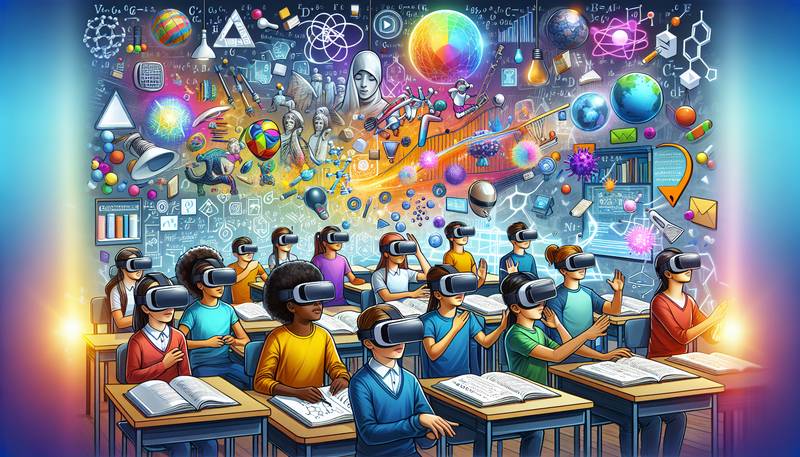The Virtual Reality Classroom: A New Dimension in Education

Education has come a long way from simple chalk and blackboards to the advent of interactive smart boards and digital learning platforms. But the latest technological advancement in the field of education is the introduction of Virtual Reality (VR) in the classroom. VR has the potential to revolutionize the way students learn and interact with educational content. With VR, students can immerse themselves in a completely virtual environment and experience education in a whole new dimension.
The Rise of Virtual Reality in Education
Virtual Reality has been around for a while, but it has only recently started to make its way into the educational sphere. With the rise of affordable VR headsets such as Oculus Rift and HTC Vive, schools and universities are now able to integrate VR into their curriculum. VR technology allows students to experience learning in a way that is not possible with traditional methods. They can now take virtual field trips, explore the human body in 3D, and even conduct virtual science experiments.
Benefits of VR in the Classroom
One of the major benefits of VR in the classroom is the level of engagement it provides. Students are more likely to retain information when they are actively participating in the learning process. With VR, students can interact with the content in a way that is both fun and educational. It also provides an opportunity for students to learn at their own pace, as they can repeat VR experiences as many times as they need to fully grasp the concepts being taught.
Another advantage of VR in the classroom is that it can cater to different learning styles. Visual learners can benefit from the immersive and interactive 3D environments, while kinesthetic learners can learn through hands-on virtual experiences. VR can also be a great tool for students with special needs, as it can provide them with a safe and controlled environment to learn and explore.
Challenges of Implementing VR in the Classroom
While VR has the potential to greatly enhance education, there are still some challenges that need to be addressed. The cost of VR equipment can be a barrier for some schools, especially those with limited budgets. Additionally, there is a need for educators to be trained in how to use VR technology effectively in the classroom. There is also the concern of VR-induced motion sickness, which can affect some users.
Another challenge is the lack of VR content specifically designed for education. While there are many VR experiences available, not all of them are suitable for the classroom. Educators need to carefully select VR content that aligns with their curriculum and learning objectives.
Virtual Reality in the Future of Education
As technology continues to advance, it is likely that VR will become an even more integral part of education. With the development of more affordable and user-friendly VR equipment, it is possible that VR will become a standard tool in classrooms around the world. In the future, we may see entire VR campuses, where students can attend classes and interact with their peers in a virtual environment.
VR also has the potential to democratize education, making it accessible to students in remote or underprivileged areas. With VR, students can have access to the same educational experiences as those in well-funded schools, providing them with equal opportunities to learn and succeed.
Conclusion
The Virtual Reality Classroom is a new dimension in education that has the potential to transform the way students learn. With its ability to engage students and cater to different learning styles, VR is a valuable tool for educators. While there are still challenges to overcome, the future of VR in education is bright. As technology continues to advance, we can expect to see VR become an even more integral part of the educational experience.
"Virtual Reality in the classroom is not just a trend, it's the future of education. It provides students with an immersive and interactive learning experience that cannot be replicated with traditional methods. As educators, it's our responsibility to embrace this new technology and use it to enhance the learning experience for our students."


